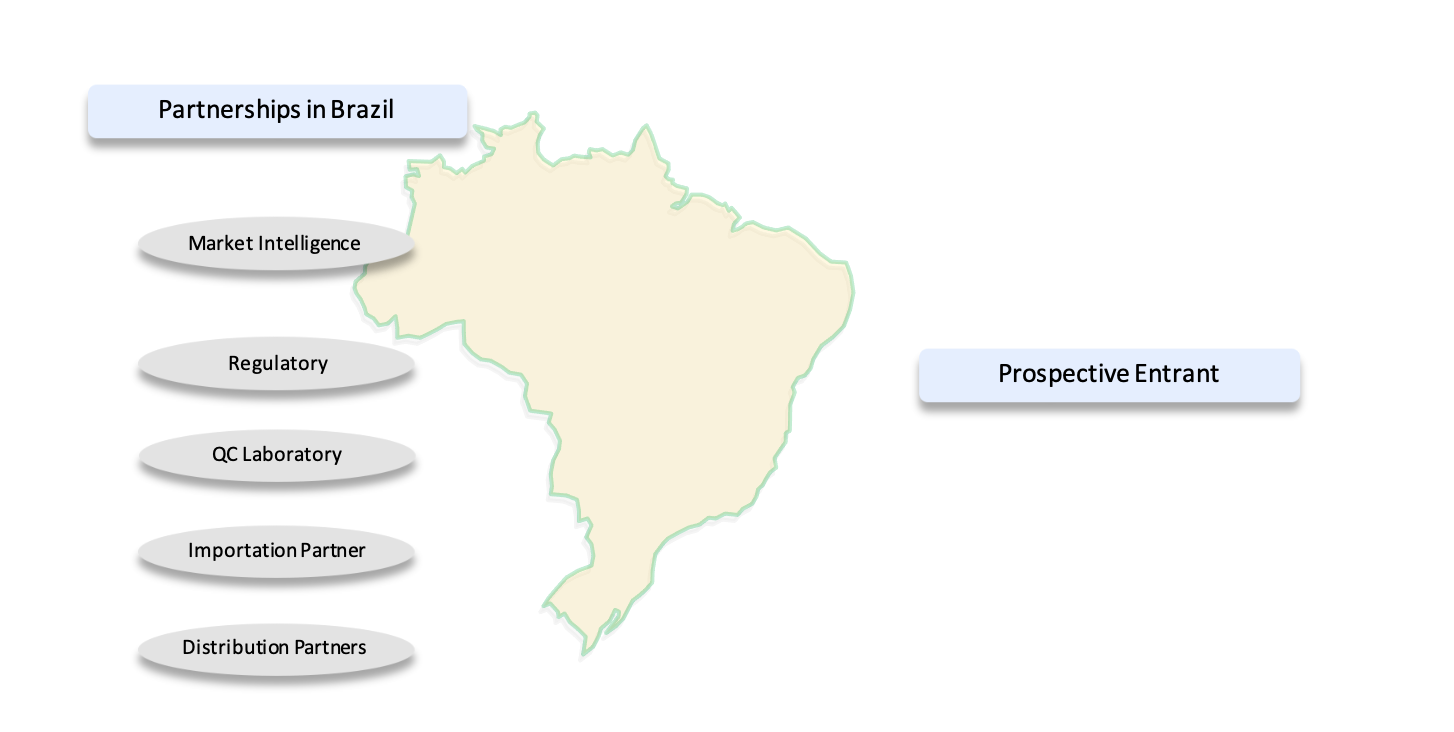Partnerships Are Key to Niche Markets in Brazil
‘Niche’ is generally associated with higher entry barriers, especially when a company is trying to enter a segment with technology-driven products. Specialty pharmaceutical companies have done very well in entering larger markets like the US, EU, Russia and even Japan; the one thing common to their success in these markets is the partnerships they have built and nurtured in these regions. In Brazil, however, such partnerships needs to be looked at differently.
Brazil is the world’s fifth largest country. Almost 85% of its population resides in urban areas. With a per capita GDP of USD 8,717, Brazil is ranked well above most of the emerging economies from Latin America, Asia, and Africa. As the political landscape changes, it is expected that Brazil’s per capita GDP will rise in the medium to long term. If we gauge the presence of international generic and/or specialty pharmaceutical companies, including the Indian giants, in Brazil, the opportunity may not appear to be overly exciting. So far, only a handful of companies have managed to build a noticeable presence in Brazil’s finished product medicines space. This space is still dominated by local companies, who successfully manufacture medicines catering to the local demand.
Why is it challenging for international companies to enter the Brazilian market? It is not just the regulatory framework — such regulatory barriers have been scaled by international generic giants in tougher markets like the US and Japan. It’s not just cultural differences — companies can have significant presence in other Latin American countries but still find it difficult to enter Brazil. Among the various reasons why Brazil presents entry challenges for foreign pharmaceutical finished product-based companies are:
- Availability of reliable data: Most of the large market research companies do not capture Brazil very well, especially the ‘non-retail’ segment, as this is influenced by the government tenders at various levels – municipal, city, state and federal, which can account for 35% of the market data.
- Unique portfolio: What works in EU/US may or may not work in Brazil (and often doesn’t).
- Segmented market: There are three major segments; each has a different infrastructure and needs a completely different approach. One may need three companies with three clones (same product, different launches/brands) to cater to these segments.
- Regulatory issues: A complex regulatory framework, including the need for pharmaceutical equivalence studies and an ANVISA-approved CRO, needs a super-efficient project management team.
- Legislations and GMP: Peculiar legislations on processes that are quite common elsewhere. For example, “site transfer” opportunity for contract manufacturing business does not exist in Brazil. This prevents almost 90% of pharmaceutical manufacturers from lower economic zones such as India, Vietnam, Thailand, Eastern EU, etc., entering in Brazil. The only way to approach Brazil is with a dedicated portfolio of products, that can be registered with ANVISA.
Click to enlarge.

Stages of entry and scope of partnerships
Stage 1: New entrant with products but no prior experience or presence in Brazil: An entrant at this stage will need to partner for all the activities as mentioned in Figure 1 above, the most important being regulatory and importer/QC laboratory, as this will be an important guide to take the product to the filing stage. Finalizing the importer will be key if the model is to control marketing authorization. Also, the QC lab and its capability to release the product is crucial in Brazil, as per ANVISA guidelines.
Stage 2: An entrant with products and some prior experience in Brazil: An entrant at this stage will need to partner for activities based on the business model strategized. If the idea is to hold/control the marketing authorizations (MAs) in medium to long-term period, then finalization of the MA holding partner (Importer/QC lab) becomes of utmost importance. Post receipt of the MA, partnerships with distributors directly or with marketing partners for out-licensing is the simplest route forward.
Stage 3: An entrant with products and prior experience in Brazil, wanting take go to the next level: An entrant at this stage needs a partner who can help them set up a physical presence and infrastructure in Brazil in a phase-like manner. If a company’s medium-term vision is to control MAs or have its own marketing/importation arm set up in Brazil, the partner needs to advise the right way to achieve it. Planning for the right portfolio, regulatory strategy and business model in sync with setting up this infrastructure becomes key.
Brazil is a market in which, initially, it is important to forge partnerships specific to the activities related to stage 1 and beyond. But involving too many partners slows decision making and the speed of the projects. Having a dedicated project management team in Brazil is crucial to managing these partnerships and taking products to the filing stage.
Sameer Kolhe is President, Maypharm Life Sciences.